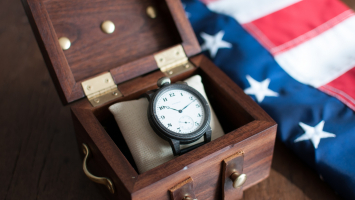Top 3 Remarkably Close U.S. Presidential Elections
The president of the United States is elected every four years by way of the electoral college, a system devised by the creators of the Constitution that today ... read more...requires a candidate to secure at least 270 electoral votes from the states to win. The US Presidential Election has always been a big political event not only for Americans but also for other countries around the world, especially those who heavily rely on the US. In this list, we picked out 3 of the most remarkably close US Presidential Elections.
-
The first presidential election on this list is considered the most contentious presidential race in American history, and also one of the closest ones (just days before the election, pollsters said it was too close to call). The presidential election occurred more than two decades ago on December 12, 2000, between George Washington Bush (Republican) and Al Gore (Democratic). George Washington Bush and Al Gore focused on domestic issues, such as the budget, tax relief, and reforms for federal social insurance programs, although foreign policy was not ignored while running for president.
Gore decided not to campaign with Bill Clinton since Clinton had a sex scandal involving Monica Lewinsky. He criticized Bush's lack of experience, while Republicans denounced Clinton's indiscretions. With Florida's electoral votes still undecided on election night, it remained unclear who had won. The results revealed that Bush had won Florida by such a close margin that the state's constitution mandated a recount. A month-long series of legal battles led to the highly controversial 5–4 Supreme Court decision Bush v. Gore, which ended the recount.
As the result, Bush won 271 electoral votes, one vote more than the 270-to-win majority, despite Gore receiving 543,895 more votes (a margin of 0.52% of all votes cast). Arkansas, Arizona, Florida, Kentucky, Louisiana, Missouri, Nevada, New Hampshire, Ohio, Tennessee, and West Virginia were among the 11 states that Bush turned from Democratic to Republican.
Video: PBS NewsHour Video: CBS Mornings -
This presidential election is between John F. Kennedy and Richard Nixon in the year 1960. John F. Kennedy (May 29, 1917 – November 22, 1963) is often referred to by his initials JFK and the nickname Jack. In the 1960 presidential election, he put up a hard fight to win the Democratic nomination, beating Hubert Humphrey in 13 primaries and taking down Senate Majority Leader Lyndon B. Johnson at the Democratic National Convention on the first ballot. On the other hand, Richard Nixon (January 9, 1913 – April 22, 1994) was chosen to run for the position by The Republicans. He had served as Dwight D. Eisenhower's vice president, to run against Kennedy in the general election.
This presidential election was one of the tightest races in US history, with the two candidates tied at 47 percent in the Gallup polls. In the end, Kennedy defeated Nixon by 303 to 219 votes, narrowly winning the popular vote outright out of 68.8 million votes cast. Kennedy then became the youngest person to assume the presidency by election. He served at the height of the Cold War, and the majority of his work as president concerning relations with the Soviet Union and Cuba.
Another fun fact about this presidential election is that the first debate between the two candidates was the first one ever to be televised, and featured an hour-long discussion focusing on domestic issues. The debate took place on September 26, 1960, in Chicago, and was moderated by Howard K. Smith, then televised by CBS.
Video: PBS NewsHour Video: Smithsonian Channel -
The last presidential election on this list dated way back to 1828. This presidential election was between John Quincy Adams (July 11, 1767 - February 23, 1848) and Andrew Jackson (March 15, 1767 - June 8, 1845), and is considered one of the "worst" elections in American political history. People have been referring to this as an event of "mudslinging and the rise of Andrew Jackson" since they believe that Jackson had organized a dirty campaign to win over Adams, even though he wasn't able to take the win in the end.
John Quincy Adams’s path to the White House pitted him against four other candidates - John C. Calhoun, William H. Crawford, Henry Clay, and Andrew Jackson - in a race that was long and very difficult. In contrast to past elections, candidates in the 1824 election were picked based mostly on popularity in the region than on party affiliation. However, this election was ultimately determined by a single vote in the House of Representatives.
With 152,901 votes to Adams' 114,023, Jackson won the popular vote, while Clay and Crawford finished third and fourth, respectively. Calhoun had dropped out of the race in the hopes of winning the vice presidential position. However, Jackson did not receive enough votes to win in the electoral college, so it fell to the House of Representatives to determine the outcome. In the end, after Clay was ousted through negotiation and his House supporters gave their votes to Adams, Adams won by a solitary vote.
Video: Mr. Droste History Video: Laughing Historically
























